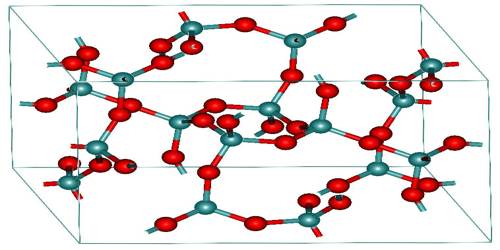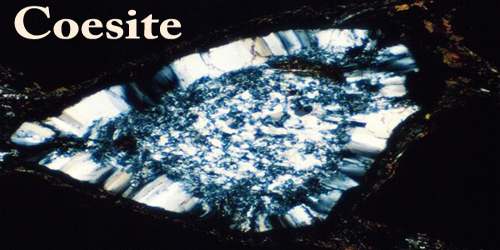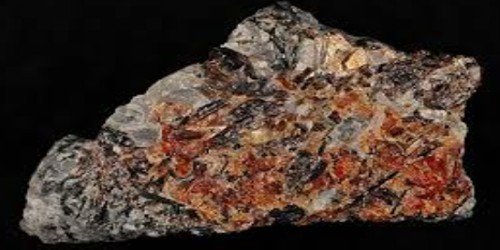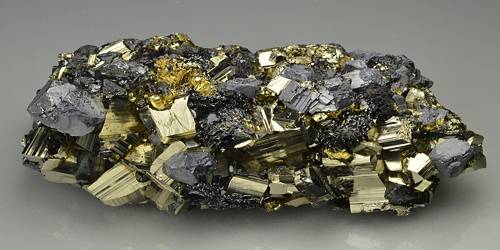Coesite is a very unusual mineral, and it is silica, silicon dioxide (SiO2), high-pressure polymorph (cristal form). It is produced when quartz is exposed to extremely high pressure (2–3 gigapascals), and relatively high temperatures (700°C, 1.300°F). It has the same chemical composition as cristobalite, stishovite, quartz, and tridymite minerals but it has a distinct arrangement of crystals. Coesite was named after American chemist Loring Coes, Jr. (1915-1978), who first synthesized Coesite in 1953 before it absolutely, was naturally discovered in Barringer Crater in 1960.
It doesn’t occur naturally in the Earth’s crust because of the very high pressure required for its formation. In 1960, Edward C. T. Chao, in collaboration with Eugene Shoemaker, of Barringer Crater in Arizona, USA, announced a natural occurrence of coesite, which was evidence that the crater had to be created by an impact. There coesite was formed from quartz under the warm temperature and pressure generated by the massive meteorite’s impact. it’s since been found within the craters of other large meteorites. It had been not expected that the coesite would survive in high-pressure metamorphic rocks. In metamorphic rocks, coesite was initially described as being carried up by ascending magmas in Eclogite xenoliths from Earth’s mantle; kimberlite is the most common host of such xenolites.

Coesite occurs only in the prism and tabular crystals of microscopic order. It is usually around Quartz sand pebbles as a white dust or as glassy material. Coesite is now recognized in metamorphic rocks as one of the strongest metamorphic mineral markers at very high pressures (UHP, or metamorphic ultrahigh-pressure). A synthetic form has been produced with large crystals resembling those of Gypsum. Coesite is formed at pressures above about 2.5 GPa (25 kbar) and temperature above about 700 °C. This corresponds to a depth of about 70 km in the Earth. It can be retained in other processes as mineral inclusions and when it partly returns to quartz, the quartz rim exerts pressure on the center of the grain, retaining the metastable grain when tectonic forces uplift and exposing these rocks to the surface.
Quartz should change to coesite at depths of 60 to 100 km (40 to 60 miles) below the Earth’s surface. Coesite has been found in UHP metamorphic rocks around the world including Germany’s Erzgebirge, Antarctica’s Lanterman Range, Kazakhstan’s Kokchetav Massif, Norway’s Western Gneiss area, Eastern China’s Dabie-Shan Range, Eastern Pakistan’s Himalayas, and the Vermont Appalachian Mountains. In 1984 coesite was found in ultrahigh-pressure metamorphic rocks of the Dora Maira region, Italy.
The crystal structure of the coesite is similar to that of feldspar and consists of four silicon dioxide tetrahedra arranged in Si4O8 and Si8O16 rings. Further, the rings are set in chains. This structure is metastable within the quartz stability field: coesite will gradually decay back into quartz with a consequent increase in volume, although the metamorphic reaction is very slow at the low Earth surface temperatures. The symmetry of crystals is monoclinic C2/c, No.15, symbol Pearson mS48.
Information Sources:
















